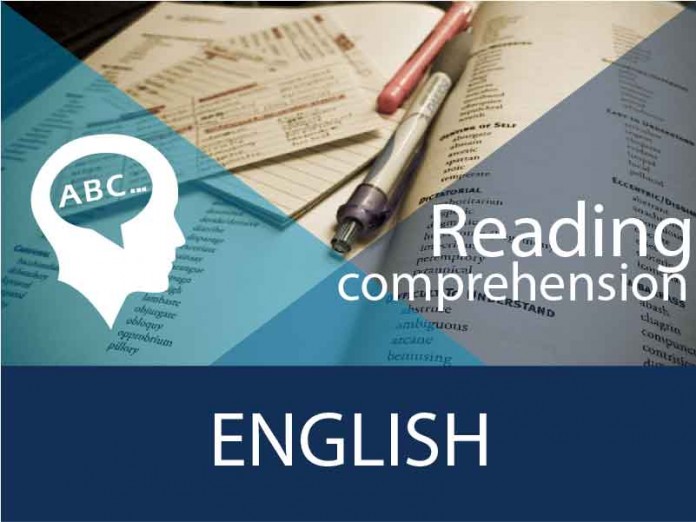ENGLISH-Reading Comprehension Practice Set – 17
As Banking EXAMS like IBPS Clerical, IBPS PO and SSC CGL 2017 exam is on the way. So, for the practice of candidates here we are providing English Practice set to boost up your preparation.
The option in India will soon apply not only to the bags that hold the groceries, but also to the cash used to purchase them.The Reserve Bank of India (RBI) is preparing to circulate 1 billion plastic notes of 10 rupees (6 fils) in five cities to test their practicability. The purpose of the new notes was to increase the lifespan of the currency and combat counterfeiting. The five cities – Kochi, Mysore, Jaipur, Bhubhaneshwar and Shimla – have been chosen for their geographic disparity and to test the effect of their varying climates on the notes. No date has been announced for the start of the trials. Plastic currency notes – or polymer banknotes, as they are also called – were first issued in Australia in 1988 and have since been adopted in Singapore, Brazil, Mexico and Nigeria, among other countries. Only a handful of nations have switched over entirely to polymer currency. They include Canada, New Zealand, Brunei and Vietnam.
There have been no estimates in India of the cost of printing banknotes on paper versus plastic. But central banks in Canada and New Zealand have said that plastic notes cost twice as much to produce. However, polymer notes have an average lifespan of five years, compared with one year for paper notes. “You can tear paper with your fingers. You can’t do that with polymer notes,” Mr Jhunjhunwalla said. “It isn’t easy to write on polymer notes or crease them. Paper is affected in climate that is too cold or too warm or too rainy.” For the RBI, the durability of plastic cuts the expense of printing replacements for soiled paper notes and disposing of those taken out of circulation. According to the RBI’s annual report for the year from 2009 to 2010, 13 billion banknotes – nearly a quarter of all the notes in circulation – had to be destroyed. Until the mid-1990s, retracted banknotes were burnt. Today, as in many other countries, soiled paper notes are shredded. The RBI has tried to recycle shredded notes into novelty paperweights, bricks or cardboard. But Mr Gandhi said they discovered the paper was so finely shredded that they could not even give it away. The shredded notes now make their way to landfills and land reclamations.
1. What’s the main reason to introduce plastic currency by the Reserve Bank of India ?
1) To improve security features to defeat the efforts of counterfeiters.
2) For improving the life of bank notes.
3) Plastic notes are stain proof and don’t tear easily.
4) Other countries i.e. Australia and Singapore have also launched plastic notes.
5) None of these
2. Why only five selected cities are chosen for trial of plastic currency ?
1) Due to varied geographical locations and climatic conditions.
2) These cities have major complain of counterfeiting.
3) Security and intelligence agencies are working only in these cities to thwart the illegal activities related to fake Indian currency notes.
4) All of the above
5) None of these
3. According to the passage, which of the following can be said about the plastic currency ?
1) Such notes incorporate many security features not available to paper banknotes.
2) Plastic currency is made from a polymer.
3) It is last significantly longer than paper notes.
4) All of the above
5) None of these
4. Which of the following is/are true about the impact of plastic currency on Indian economy ?
1) It will drive economic growth.
2) It will increase purchasing power and need to carry hard cash.
3) Banks will charge for this.
4) Economic cycle consumption greater income decline in inventory increased production.
5) None of these
5. Which of the following statement would weaken the arguments for issuing plastic currency in India ?
1) The cost of the notes is going to be significantly higher; because once printed these notes will last long.
2) Counting them might be bit of a task.
3) The authorities might also have to bear the cost of replacing the ATMs or vending machines and other automatic
payment devices that issue money.
4) All of the above
5) None of these
Directions (6 – 8) : Choose the word which is MOST OPPOSITE in meaning of the word printed in bold as used in the passage-
6. Counterfeiting
1) Duplication
2) Original
3) Reproduction
4) Facsimile
5) Likewise
7. Combat
1) Harmony
2) Engagement
3) Struggle
4) Fight
5) Skirmish
8. Disparity
1) Divergence
2) Imbalance
3) Discrepancy
4) Similarity
5) Imparity
Directions (9–10) : Choose the word which is MOST SIMILAR in meaning of the word printed in bold as used in the passage-
9. Retracted
1) Cancelled
2) Mended
3) Sanctioned
4) Forged
5) Emphasized
10. Novelty
1) Standard
2) Regular
3) Weird
4) Horrific
5) Newness
Answers:
1) A 2) A 3) D 4) E 5) C 6) B 7) A 8) D 9) A 10) E





















